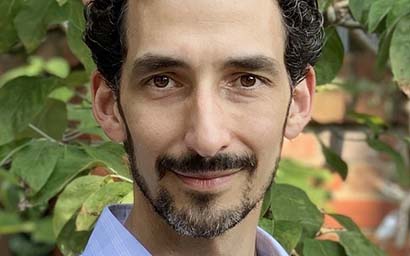Patrick Wood Uribe, chief executive of Util, shows how investment funds that hold ESG laggards can become ESG leaders depending on which of the UN SDGs they are measured.
The regulators are coming for ESG. That’s good news if it means fewer funds doing ESG badly. It’s bad news if it means fewer funds doing ESG at all.
Markets might be cyclical, but the principles driving sustainable investing are structural. Climate change could cost $23 trillion per year by 2050, according to insurer Swiss Rein.
Mitigation and adaptation will cost many trillions more. Given the scale of capital deployment, it’s not a challenge the investment industry can sit out. The long-term risks, and corresponding returns, are both financial and existential.
Too little rulemaking is, evidently, bad – but too much could stymie innovation and investment in climate solutions. Take the SEC’s proposal that funds only be labelled ‘sustainable’ if sustainable factors are weighted higher than financial.
Given their legal obligation to act in the financial best interest of their clients, how then does a US adviser choose the sustainable option without inviting a lawsuit? And then there’s the onus on asset managers to detail ever more information and align to yet more rigid parameters, even as their budgets shrink under fee pressure.
In defence of chaos
A straightforward score or standard is valuable in that it minimises debate, but sometimes those debates are worth having.
We’re hardwired to make shortcuts. Easier to focus on Stuart Kirk’s “who cares if Miami is six metres underwater in 100 years?” than his follow-up “we spend way too much on mitigation financing and not enough on adaption financing.” [Stuart Kirk is the former global head of responsible investments who resigned following his controversial comment].
The annual cost of adaptation could reach $300 billion by 2030. While all attention is on mitigation, less than 2% of adaptation finance currently comes from private sources. Surely a more valuable conversation than the outrage, on which vats of ink and miles of column inches were spilled.
SEC chair Gary Gensler has said he wants to make a sustainable fund label as easy to decipher as a ‘fat free’ label on a milk carton. The trouble is, sustainability isn’t fat content. There’s divergence between E and S and G, and there’s divergence in opinion about their relative importance. Can we criticise ratings providers for obscuring the former with aggregated scores but for representing the latter with relative weighting? Not sure.
17 ways to be sustainable
Util will soon release a report that shows just how tricky it is to get it right. For each of the 17 SDGs, we surfaced the ten funds that contribute the most positive impact and the ten funds that contribute the most negative impact. Our fund universe comprises every US-domiciled equity fund.
With eight years remaining and tens of trillions needed to achieve the UN Agenda for Sustainable Development, investors need to mobilise capital today—but there’s no catchall solution.
For example, consider SDG 13: Climate action. The ten highest positive contributors to SDG 13 are, as expected, those in clean energy and technology (and insurance, because of adaption). No big surprises:
• Global X Hydrogen ETF
• Fidelity Clean Energy ETF
• Invesco Solar ETF
• Global X Solar ETF
• KraneShares MSCI China Clean Technology Index ETF
• ALPS Clean Energy ETF
• iShares US Insurance ETF
• Global X Wind Energy ETF
• Global X CleanTech ETF
• Invesco KBW Property & Casualty Insurance ETF
Companies with a positive impact on the environmental SDGs tend to be inoffensive in that they don’t—by virtue of their products—have a negative impact on the social SDGs.
For those with a negative impact on the environmental SDGs, however, it’s more complicated. The ten highest negative contributors to SDG 13 are mostly utilities funds. Again, not surprising in itself:
• Invesco S&P 500 Equal Weight Utilities ETF
• John Hancock Multifactor Utilities ETF
• ProShares Ultra Utilities
• ProFund VP Utilities
• The Utilities Select Sector SPDR Fund
• Rydex Utilities Fund
• Fidelity MSCI Utilities Index ETF
• Vanguard Utilities Index Fund
• JNL/Mellon Utilities Sector Fund
• Invesco Dynamic Energy Exploration & Production ETF
But there is a shock in that, against other SDGs, some of the SDG 13 laggards become leaders.
Utilities, and the funds that hold them, are among the top positive contributors towards SDGs 4 (Quality education), 7 (Affordable & clean energy), 8 (Decent work & economic growth), and 9 (Industry, innovation & infrastructure).
Even on a single SDG, an industry can have effects both positive and negative. If you look under the bonnet of SDG 7, for instance, utilities are both positive (affordable) and negative (clean).
In his infamous speech, Kirk joked about “the amount of work these people make me do.” As sustainable finance evolves into a sophisticated market, it’s not going to get any easier.
*Patrick Wood Uribe is the CEO of Util, which publishes data on corporate impacts related to 17 UN SDGs.





